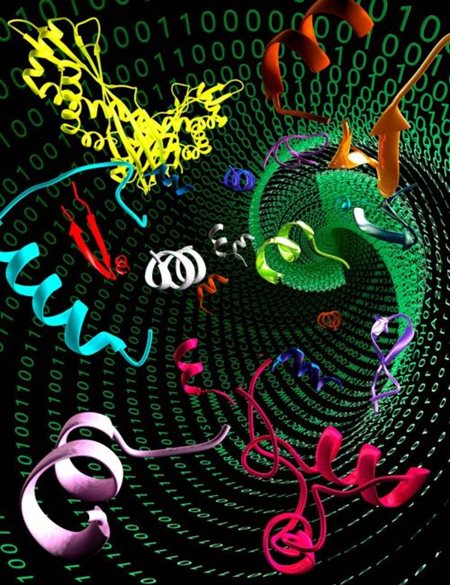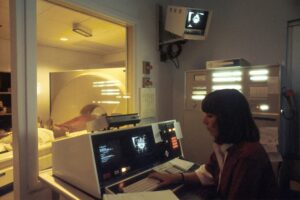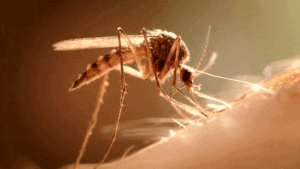
Scientists are increasingly turning to artificial intelligence (AI) to revolutionize the discovery and generation of novel antibiotics. In a Philadelphia laboratory, a robot the size of a microwave meticulously assembles molecules that were mere lines of code just a week prior. These molecules, some inspired by the genomes of ancient creatures like woolly mammoths and Neanderthals, are being tested against bacteria that have developed resistance to existing antibiotics.
Antimicrobial resistance (AMR) is a growing global threat, killing thousands annually and posing a significant risk to millions more in the future. Despite the urgency, the discovery of new antibiotic classes has stagnated, with the pipeline of drug candidates remaining sparse. This has prompted scientists to leverage AI to streamline the lengthy and often unsuccessful search for antibiotics, making it faster, cheaper, and more comprehensive.
“A number of years ago, we had this idea of thinking of all of biology as an information source, as a bunch of code,” said César de la Fuente, Ph.D., a Presidential Associate Professor at the University of Pennsylvania. “If you think about it that way, you can devise algorithms to sort through that code and identify things that might look like antibiotics.”
The Challenge of Discovering New Antibiotics
The past four decades have seen remarkable scientific advancements, yet the discovery of a new class of antibiotics has remained elusive. This is particularly concerning given that AMR is projected to cause 39 million deaths over the next 25 years, with current antibiotics failing to meet the escalating threat. The World Health Organization (WHO) warns that the existing pipeline lacks innovative compounds necessary to combat AMR.
Historically, antibiotics were discovered by exploring nature for compounds that could kill microbes without harming humans. This method, however, has become less effective over time. “It’s a very physical process where scientists literally go around nature and dig into dirt and water samples,” explained de la Fuente. “But, as you can imagine, that’s a painstaking process that is unpredictable.”
Moreover, effective antibiotics must not only destroy bacteria but also be soluble, reach the right anatomical site, and avoid harming the host. Jonathan Stokes, Ph.D., an assistant professor at McMaster University, emphasized the complexity of drug discovery, noting that it requires optimizing multiple properties simultaneously.
AI: A Game Changer in Antibiotic Discovery
AI, particularly machine learning (ML), offers a promising solution to the challenges of antibiotic discovery. ML algorithms learn from vast datasets to make predictions about new data, identifying patterns and narrowing down potential candidates for further investigation.
By inputting the chemical structures of known active and inactive compounds, ML models can predict new “hits” from billions of chemical structures. “ML models are suggestion generation boxes,” Stokes said. “I, as the scientist, can then take those suggestions, pick the best ones and move into the lab and run the real-world experiment.”
Mining Ancient Biology
De la Fuente’s lab is at the forefront of using AI to explore genomic and proteomic data across the Tree of Life, seeking antimicrobial peptides from both living and extinct organisms. By analyzing the proteomes of Neanderthals and Denisovans, the lab identified peptides with antimicrobial activity, which were effective against pathogens in laboratory tests.
Using ML, Cesar de la Fuente’s lab can mine the proteomes of ancient animals for antibiotic candidates.
This innovative approach, termed “molecular de-extinction,” not only provides insights into evolutionary biology but also uncovers molecules that could address contemporary challenges like AMR.
Designing Novel Antibiotics
Beyond mining existing biological data, AI is also used to design entirely new compounds. Generative modeling allows scientists to create novel molecules by training ML models on known antibiotics. “Instead of now showing pictures of new molecules from the internet, you say, ‘Hey, model, draw me a brand-new picture of a molecule that you think is going to be active,'” explained Stokes.
Stokes’ team developed a model that uses multi-atomic molecule “building blocks” to ensure the synthetic feasibility of its output. This approach has already yielded compounds with antibacterial activity against challenging pathogens.
The Road Ahead: Challenges and Opportunities
Despite the promise of AI in antibiotic discovery, the journey from lab to market is fraught with challenges. Discovering lead compounds is just the first step in a lengthy development process, often hindered by clinical trial failures and financial constraints. Antibiotics are not lucrative for pharmaceutical companies due to their low cost and short treatment durations, necessitating public and philanthropic investment to bring new drugs to market.
AI’s success in this field hinges on the availability of high-quality, standardized data. De la Fuente’s lab has invested years in creating robust training datasets, a critical foundation for developing effective ML models.
“AI is just a pipette,” Stokes said. “It’s just another tool in our toolbox to accelerate solutions to the problems we were going to try to address anyway. That’s it-no more and no less than that.”
Ultimately, while AI can significantly enhance the discovery process, the successful development and deployment of new antibiotics remain a human endeavor, reliant on collaboration, investment, and innovation.
In addition to antibiotic discovery, AI is being used to detect antibiotic resistance in bacteria. Learn how scientists are leveraging AI to develop detection tactics that are easy, accurate—and quick.







